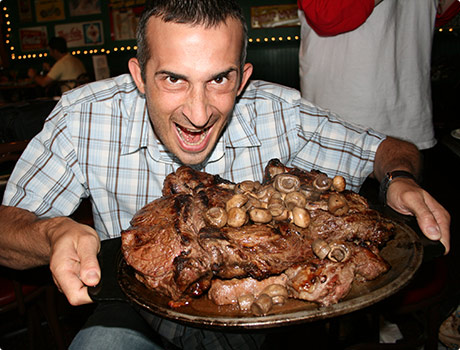We all know that proteins are part of every cell, tissue, and organ in our bodies. They are constantly being broken down and being replaced. Protein is made up of amino acids, whose function, among others, is tissue repair and maintenance in the body. All up there's about 20 different amino acids that join together to form the different proteins; some are made in the body, others are not.
Amino acids that can't be made by the body are called essential amino acids; it is essential that our diet provide these. The question is just how much of these do we need? Why is this so very important?Because according to Dr Amy Lou Lanou in her excellent book Building bone Vitality on the subject, excess protein causes such a rush of acid in your bloodstream that it causes IMMEDIATE bone calcium pilferage. The China Study, by T. Colin Campbell PhD goes further; he says that excess protein causes cancer.
Traditionally, dieticians score protein sources by how many essential amino acids they provide.
- Complete proteins are those that provide all of the essential amino acids. Animal-based foods for example, meat, poultry, fish, milk, eggs, and cheese are considered complete protein sources.
- Incomplete proteins on the other hand, are those that are low in one or more of the essential amino acids.
- Complementary proteins are two or more incomplete protein sources that together provide adequate amounts of all the essential amino acids; an example includes tofu and brown rice.
I'm not doubting that protein is needed for muscle growth. My question is how much. That fact is that most people overestimate - or worse - over indulge - protein needs.
Foe instance, the average American eats about three times the amount of protein he or she actually needs - and Australins, you know it - you're not much better!
Guidelines you can use to determine how much protein you should strive to consume and what foods provide it:
1. Look at Your Overall Food Intake: begin by noting the variety of foods, (or lack thereof), in your shopping trolley. Greater variety of foods gives you a greater opportunity to take in nutrients, such as protein, carbohydrates and fat, which your body needs to stay healthy.
2. How much do you need? In general, go for 10–35% of your daily calories from protein. Recommended Dietary Allowances (RDA) vary by different age groups. Generally women aged 14+ require a mere 46 grams and men 14+ require just 52 grams a day.
2. How much do you need? In general, go for 10–35% of your daily calories from protein. Recommended Dietary Allowances (RDA) vary by different age groups. Generally women aged 14+ require a mere 46 grams and men 14+ require just 52 grams a day.
3. Shop Carefully: We look for lean meats and fish (we are off poultry for now) Diary products are good but we use as little as possible.. Look also for legumes, tofu, nuts and nut-butter. Cereals, breads, beans and vegetables are also good sources of protein.
4. Remember alkaline-forming food. I strive for an 80/20 mix of alkali-producing foods to acid-producing foods. To attempt all alkaline misses the point; we need protein, protein does flood the blood with amino acids which do cause an immediate acid overload, but it's all about balance. The RDA is an elegant sufficiency of 52 grams. care to weigh the next steak you cook? Hmmm? So I'm big on Greens, coco oil and of course my wonderful alkaline ionized water.
Some people have asked me if they can get their protein through protein powder. Take care: 15 instore protein powders tested (excessively) positive for arsenic, cadmium, lead and mercury.
Oh yes, THE best Acid/Alkaline Food Guide is available here and my own creation, the Acid Alkaline Food Chart is here


No comments:
Post a Comment